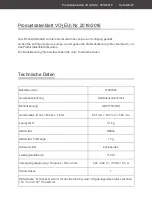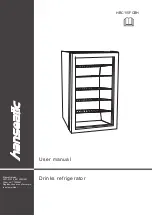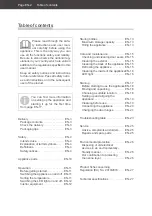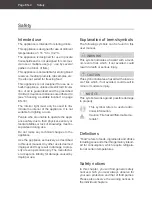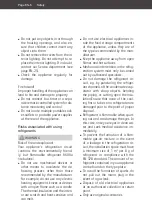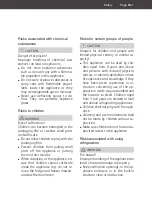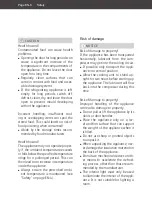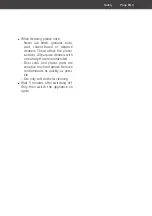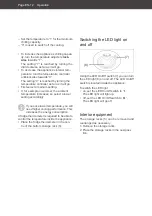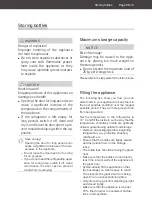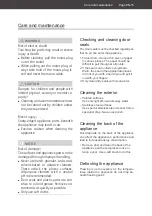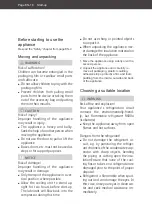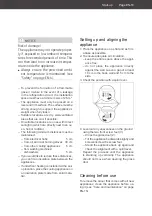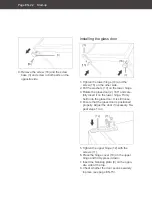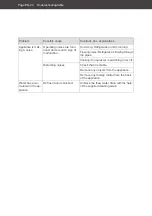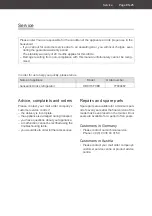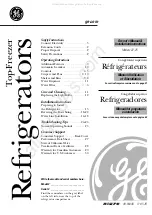
Operation
Page EN-11
Before getting started
– Read the “Safety” chapter from page EN-4.
– Set up and connect the appliance as de-
scribed in chapter “Start-up” from page
EN-17.
Switching the appliance on
and off
NOTICE
Risk of damage!
If the appliance has been transported
horizontally, lubricant from the com-
pressor may get into the cooling circuit.
■
Allow the appliance to stand upright
for approx. 2 hours after transport
and before connecting.
(6)
Switching on
1. Insert the mains plug into an easily acces-
sible socket (220–240 V~ / 50 Hz).
2. Turn the temperature controller (6) to a
value higher than “0”.
The appliance is then switched on. The
compressor starts to work, the refrigerant
flows through the pipes and a quiet hum-
ming sound can be heard.
Operation
Switching off
1. Turn the temperature controller (6) to “0”.
The compressor is switched off. The appli-
ance will no longer be cooling, but will still
have electricity.
2. Disconnect the mains plug from the socket.
The compressor is switched off. The appli-
ance no longer refrigerates.
3. Empty the appliance and clean it (see
“Care and maintenance” on page EN-15).
4. Leave the glass door slightly ajar to pre-
vent mould from forming.
After switching off , wait for approx.
5 minutes before switching the appli-
ance back on. The compressor requires this
amount of time to re-start.
Setting the temperature
WARNING
Health hazard!
The appliance may not operate proper-
ly if exposed to low ambient tempera-
tures for extended periods of time. This
can then lead to an increase in temper-
ature inside the appliance.
■
Always ensure the prescribed ambi-
ent temperature is maintained (see
“Safety” on page EN-4).
The ideal refrigerator temperature is +6 °C.
A temperature setting that is too high or too
low can reduce the shelf life of your food. This
leads to greater food waste.
The temperature controller (6) is located in-
side the appliance.
The appliance’s interior temperature can be
adjusted in increments of “1” to “7”:
– Set the temperature to “7” for the maximum
chilling capacity and therefore the lowest
temperature possible.



